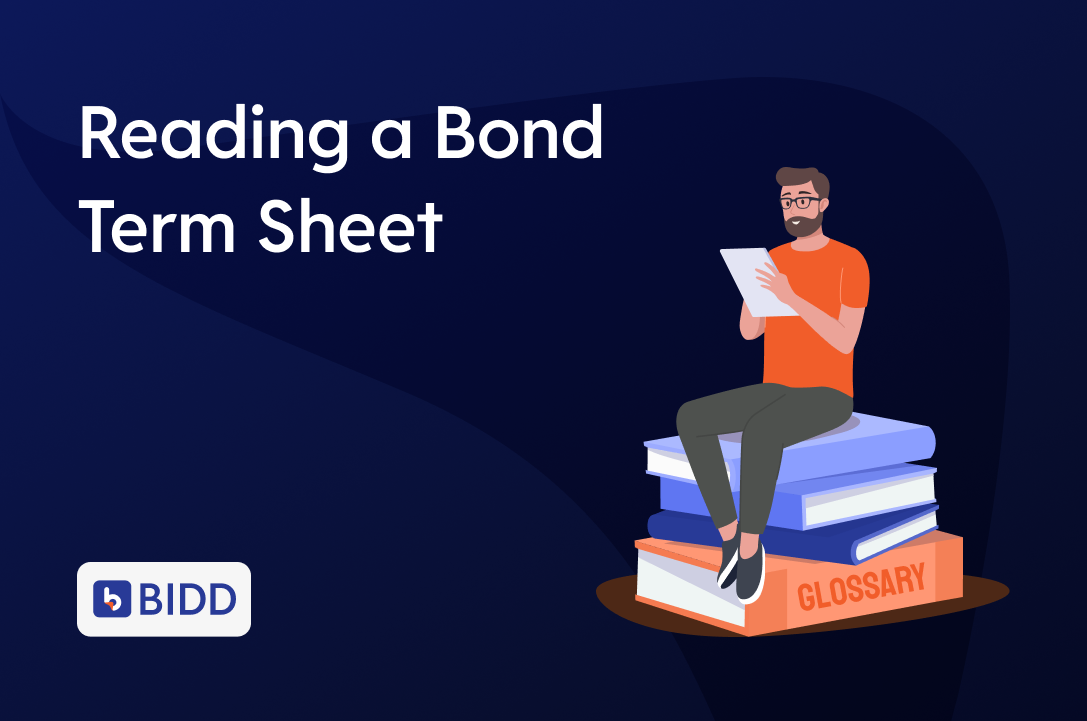Because understanding your investment shouldn’t feel like reading a legal contract.
Let’s Start with a Quick Question
Ever opened a bond term sheet and thought,
“What even is all this?”
You’re not alone.
Between acronyms, figures, and formal language, term sheets can feel more like a puzzle than a guide.
But here’s the good news:
They’re not as complex as they seem.
Once you know what to focus on, a term sheet becomes your cheat sheet — helping you assess quickly whether a bond deserves your money and attention.
Let’s break it down, plain and simple.
What Exactly Is a Term Sheet?
Think of it as the summary page of a bond.
It tells you the essentials — like a nutrition label, but instead of calories and sugar, you’re checking for:
- How much interest you’ll earn
- When you’ll receive payments
- What risks you’re taking
Here are the key sections — and what they mean.
The Must-Know Sections of a Term Sheet
1. Issuer
Who is borrowing your money?
This could be:
- Government of India
- A listed corporate (e.g., Tata Capital)
- A private NBFC
The issuer’s creditworthiness and track record give you insight into how safe your investment is.
Tip: Big name? More trust. But always check the credit rating.
2. Face Value
What is the base amount of the bond?
Usually ₹1,000 or ₹10,00,000 — this is the amount you’ll receive back at maturity.
Also, your coupon payments are calculated on this amount — not the market price.
3. Coupon Rate
How much interest do you earn each year?
For example, a 10% coupon on a ₹1,000 bond means ₹100 annually.
But this isn’t always your actual return — which is where YTM comes in.
4. Coupon Frequency
How often do you get paid?
- Annual: Once a year
- Semi-Annual: Twice a year
- Quarterly: Four times a year
More frequent payments can help with cash flow and slightly improve returns if reinvested.
5. Tenor / Maturity
When do you get your principal back?
Could range from 1 to 10+ years.
- Shorter tenor: Lower risk, lower return
- Longer tenor: Higher potential returns, but more market risk
6. Yield to Maturity (YTM)
What is your actual return if you hold the bond till maturity?
YTM considers:
- Current market price
- Interest payments
- Time to maturity
It’s the number that matters most when comparing options.
7. Credit Rating
How risky is the bond?
Provided by agencies like CRISIL, ICRA, and CARE.
- AAA: Extremely safe
- AA / A: Stable, low risk
- BBB or lower: Riskier, higher returns possible
Use this to align with your risk appetite.
8. Call / Put Options
Can the bond be redeemed early?
- Call Option: The issuer can repay before maturity
- Put Option: You can exit early under certain conditions
These affect how long you may actually hold the bond — and your return potential.
9. Tax Treatment
How are returns taxed?
- Interest income is typically taxable as per your income slab
- Capital gains (if sold before maturity) may also be taxed
Understand this upfront to avoid surprises.
Bonus: What You Can Skip (for Now)
Some term sheets include extra details like:
- ISIN numbers
- Registrar and transfer agent info
- Trust deed references
Unless you’re doing a compliance review or paperwork filing, these can be safely skipped. Focus on the core sections above.
Why Should You Care?
Because once you can read a term sheet, you can:
- Compare bonds quickly
- Avoid unwanted risks
- Invest with confidence, not guesswork
Understanding your investment is empowering — and essential.
Quick Recap: Term Sheet Essentials
| Section | What It Tells You |
| Issuer | Who’s borrowing your money |
| Face Value | Base amount of the bond |
| Coupon Rate | Fixed interest percentage |
| Coupon Frequency | How often interest is paid |
| Tenor / Maturity | When your principal is returned |
| YTM | Actual return if held to maturity |
| Credit Rating | Safety and risk level |
| Call/Put Options | Early exit or early repayment rights |
| Tax Treatment | Whether and how the return is taxed |
Final Thoughts
A bond term sheet doesn’t have to be overwhelming.
It’s your roadmap, checklist, and filter — all in one.
And platforms like Bidd make this even easier by presenting all key facts — without the jargon.
So next time you see a bond term sheet?
Don’t scroll past.
Scan it like a pro — and make smarter, more informed decisions.
Because in the world of bonds, knowledge truly pays off.




